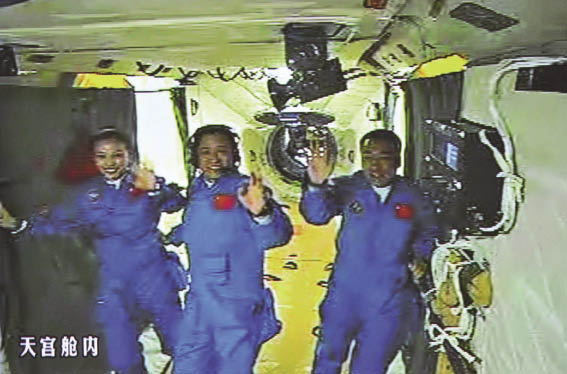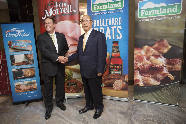China's Fifth Manned Space Exploration
There were many other technological advancements realized during the Shenzhou-10 mission. For instance, the mission utilized a much more effective system of surveillance camera monitoring than that of Shenzhou-9, thus enabling clearer, wider-ranged and more effective monitoring of the spacecraft’s condition throughout the launch process.
Worth mentioning is that more and more of the equipment now used in China’s space missions is designed, developed and produced in China. Domestic investment in space technology research and development is now beginning to pay off, according to Wang.
“Shenzhou-10 was [China’s] first application-oriented spaceflight, and so its main task was the conducting of scientific experiments,” said Tao Jianzhong, a senior research fellow with the Shanghai Space Technology Institute. According to Tao, about 30-odd scientific experiments took place aboard Shenzhou-10, tripling those on Shenzhou-9. These experiments related not only to the technology of the spacecraft and medical astronautics, but also to pursuing further progress in China’s Beidou navigation satellite system project and ocean research satellite capabilities.
|
 |
| Chinese astronauts Nie Haisheng, Zhang Xiaoguang ans Wang Yaping open the hatch of Tiangong-1 at 4:17 p.m., June 13, 2013. |
Lecture from Space
One highlight of the mission was a 40-minute physics class given by astronaut Wang Yaping aboard Tiangong-1, which was broadcast live on June 20 to more than 60 million students and teachers in 80,000 middle schools across the country. Besides demonstrating principles of weightlessness and the surface tension of fluids in the space, Wang, the country’s second female astronaut, answered questions from 330 school kids watching from a classroom at a middle school affiliated with the Renmin University of China in Beijing. The two other astronauts in her crew, Nie Haisheng and Zhang Xiao-guang, provided assistance. China is the second country after the United State to have conducted a live “space lecture.”
The Shenzhou-10 mission was long, and the crew members’ workload demanding. Measures were taken pre-launch to ensure the astronauts’ living conditions during the flight were conducive to their consistent performance. Wang, Nie and Zhang had more meal choices during the missions than before them, for instance. A work-sleep timetable was drafted with help from interdisciplinary experts. The astronauts consequently had more downtime than in earlier missions. Special consideration was given to waste disposal by equipping domestic waste disposal units with an array of different technologies. During their stay in Tiangong-1, the three astronauts also rearranged the floor of the space lab and performed related “renovations” to expand the space available for astronauts on future missions to live and work.
Space-tech Put to Use
Though many people in China – and indeed the world – are enthralled by the new progress in mankind’s space exploration, there is still lots to learn and technological barriers to overcome before we start sending missions deeper into space. But in the push to solve these problems, people do benefit: space technology trickles down into distinctly terrestrial uses.
According to Tao Jianzhong, for example, the solar cell conversion rate on Shenzhou-10 reached about 26 percent, leading the world. It is expected that further advancements in solar cell efficiency will eventually result in lower power costs on earth. Another example: high quality lubricating oil is a must for spacecraft, and Chinese scientists developed a variety of such substances for the Shenzhou series. Advanced techniques learned in the production of high quality lubricating oil will find commercial application in civilian industries such as aerospace, automobile production and even white goods.
It is common knowledge that spacecraft design requires a suite of advanced, durable materials. The development and deployment of Shenzhou-10 has resulted in many new materials and techniques being pioneered. Wang Kunsheng, president of the China Astronautic System Science and Engineering Institute, said about 80 percent of the 1,100 new materials developed in China in recent years were first and foremost developed for – and used in – the space industry.
“Considering the long periods astronauts are working and living in space, Chinese scientists and medical experts have had to find ways to protect them from bone loss and muscular atrophy. Their innovative approaches to the problems are of high value for civilian use, since on earth these medical problems have been headaches for both bedridden patients and their doctors,” said Chen Shanguang, director of the Research and Training Center for Astronauts.

